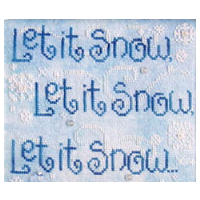Sierra Snowpack Is Above Normal; Let’s Scale Back Water Rationing

There’s above-average snowpack in the Sierra Nevada Mountains, El Niño is gnawing at the edges of the drought and Californians have reduced their water usage. Looks like the state has got the hang of this conservation thing, so maybe it’s time to ease up on the mandated 25% urban rationing.
The staff at the State Board of Water Resources Control said it wasn’t reacting to the weather when it announced a draft proposal (pdf) Tuesday to scale back the cuts to 22% overall and shift the burden around. Fast-growing, dynamic areas like Silicon Valley would get more, along with some of the hottest areas, like Palm Springs and Bakersfield.
Max Gomberg, the board's climate and conservation manager, said the moves were “cautious” and in response to complaints from a lot of communities about inequities made when the restrictions were handed out in April. The proposed changes would probably take effect in February.
Sara Aminzadeh, executive director of the California Coastkeeper Alliance, wondered what the hurry was. “It sends the wrong message to move back from the conservation target,” she told the San Jose Mercury News. “We have done such a good job of communicating what we need to do for conservation, and to add this new element is confusing.”
Aminzadeh said the state should wait until at least April, when assessments made of water availability will be much more accurate. April 1 is also the one-year anniversary of Governor Brown’s announcement of the state’s first mandatory water restrictions.
She’s no fun. Snowpack was reported to be 111% of normal, compared to 54% last year and 24% the year before. That means more water flowing from the mountains into reservoirs, rivers, streams and the Delta for shipment south to farmers and thirsty Southern Californians.
California’s Department of Water Resources (DWR) spokesman Doug Carlson told the Riverside Press-Enterprise the snowpack numbers would be real good even if we weren’t still in a drought, and then emphasized that we really were still in a drought.
“Because the reservoir levels are so extraordinarily low [every one below 50%], we’d have to have a lot more rain and snowfall to have an impact on the drought,” he said. “One wet winter is probably not going to do it for us. And we can’t make good, solid predictions based on what’s fallen so far.”
Carlson also cautioned against making any assessments before April 1 and noted that despite the precipitation, “Just because it’s a strong El Niño year doesn’t mean we’re going to have a heavy rain year.”
Gomberg said they could always change the rules again in April if circumstances require it. So conceivably it could be changed every few months as California adjusts to the proposition that global warming may have introduced a new normal that will require a permanent change in how the state manages its water resources.
Perhaps it’s best to stay flexible. Comments from the public on the regulatory framework are due by January 6 and a new draft emergency regulation will be released in mid-January for more comments.
–Ken Broder
To Learn More:
California May Ease Water Cuts in Hot and Fast-Growing Areas (by Denis Cuff, San Jose Mercury News)
California Water Regulators Suggest Slight Easing of Conservation Requirements (by Bettina Boxall, Los Angeles Times)
California Snowpack Measures an Encouraging 111% of Normal (by Richard Brooks, Riverside Press-Enterprise)
Governor Pegs Another Year of Drought Measures to El Niño (by Ken Broder, AllGov California)
Proposed Regulatory Framework for Extended Emergency Regulation for Urban Water Conservation (State Water Resources Control Board) (pdf)
- Top Stories
- Controversies
- Where is the Money Going?
- California and the Nation
- Appointments and Resignations
- Unusual News
- Latest News
- California Forbids U.S. Immigration Agents from Pretending to be Police
- California Lawmakers Urged to Strip “Self-Dealing” Tax Board of Its Duties
- Big Oil’s Grip on California
- Santa Cruz Police See Homeland Security Betrayal in Use of Gang Roundup as Cover for Immigration Raid
- Oil Companies Face Deadline to Stop Polluting California Groundwater





